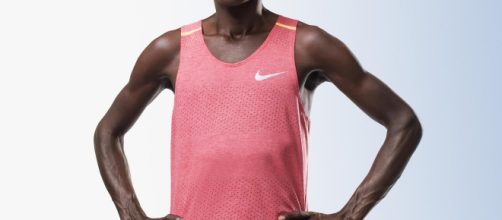What is the Nike #Breaking2 race?
Nike is working with a diverse team of leaders in several fields of science and sport keeping a holistic approach to athletes, product training, nutrition and environment. Why is Nike going to all this trouble setting this up you might be thinking? Well, this seems to be the ingredients needed so as to achieve a feat which many people consider to be impossible.
The current Men's world record time stands at 2:02:57. Now Nike wants to do a sub 2 hour marathon time, which will mean a 3% drop from the current record.
Welcome to Nikes Breaking2. In 1954, Sir Roger Banister ran the first four-minute mile breaking a record and redefining the capabilities of athletes and also inspiring confidence in other athletes.
This story according to Nike inspiration and complete belief in an impossible goal is at the core of human potential. As Bill Bowerman, Nike's co-founder and track coach once said "The real purpose of running isn't to win a race, it's to test the limits of the human heart".
Nike chose three athletes, Kenyan #Eliud Kipchoge, Ethiopian Lelisa Desisa and Eritrean Zersenay Tadese to attempt the impossible in the sub 2-hour marathon. To do this the athletes will need to shed 7 seconds off each mile in the 26.2-mile marathon, not a small feat even for the world's best runners.
How was Sub 2-hour race?
Kenya's Eliud Kipchoge finished the race with the time 2:00:25, just 25 seconds shy of the 2-hour mark, and 26 seconds off an under 2-hour mark. This was the fastest ever marathon ran, more than 2 and a half minutes quicker than the official world record of 2:02:57 set by another Kenyan Dennis Kimetto at the 2014 Berlin Marathon.
Although Kipchoge's time will not be considered for record purposed because of the rules regarding pacesetting in the race, the time he set though is not bad for a 32-year-old. Kipchoge's previous highest official finish was at the 2016 London Marathon and was 2:03:05.
Some considered Saturday's attempt as a publicity stunt rather than a valid sporting event.
Its timing gives weight to their argument as the race was run just weeks before #Nike rolls out a new line of running shoes. The race was run at Monza's Formula One course and began at 5:45 A.M Italy local time. The race has 17.5 laps of 1.49 miles (2.4 kilometres) culminating in a 42-kilometre race.
The course was chosen for its cool temperature (52 degrees at the start), trees that shield the wind, consistent asphalt surface, no sharp corners and water vapour pressure that would helo cool the runners. Pace-setters led Kipchoge and the two other elite runners through the course with a green line projected onto the road from an electric pace car which showed the pacesetters precise speed to maintain.
Eritrean Zersenay Tadese (35) world record holder of the half marathon (58:23) finished on Saturday in 2:06:51 with Ethiopian Lelisa Desisa (27) a two-time winner of the Boston Marathon finished in 2:14:10. Kipchoge, Desisa and Tadese all wore customised lightweight shoes with a carbon-fiber plate that some scientists believe gave the runners an unfair advantage as it effectively acted as a spring.
The Breaking2 attempt came at a time when track, field and distance running have doping scandals plaguing them amid international officials considering whether to discard all world records set before 2005. Nike, however, had acknowledged long before Saturday that it would not be considered for a world record as their run did not adhere to several rules desired for validation by track and field governing body the International Association of Athletics Federation (IAAF).
This race has also proved Dr Michael Joyner's prediction (an expert in human performance at the Mayo Clinic) that a human could eventually run the marathon as fast as 1:57:58. After the race, he stated that "In a bigger field, I think it will happen; it increases the odds of more than one person having the day of a lifetime."


